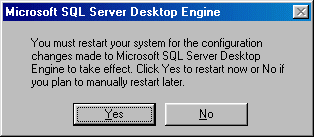|
The Structured Query Language (SQL) is the most
popular language used in computers to create and manage databases. SQL is a
language with its own syntax and grammar. SQL is a universal language that doesn't
belong to a particular company. This makes it easy for different companies or
programming environments to adopt it. In this site, we will study
techniques of creating databases and we will use the SQL. |
 |
SQL can be pronounced Sequel or S. Q. L. On this site, we
will consider the Sequel pronunciation. For this reason, the abbreviation
will always be considered as a word, which would result in “A SQL
statement” instead of “An SQL statement". Also, on this site, we will
regularly write, “The SQL” instead of “The SQL language, as the L
already represents Language. |
|
SQL is a standard language and universally used. Like most other computer
languages such as C, C++, Pascal, C#, or Java, you need a way to use it on your
computer. This access is provided by a language engine that can receive your
instructions and produce a result. In other words, you need a program that uses
SQL as its means of communication. There are many of them in
the market. They include Corel Paradox, Oracle, Microsoft Access, MySQL,
Microsoft SQL Server, Sybase, etc. Some of these programs are easier to get, some are
not.
Although the SQL is monitored by an independent organization, it is
not unusual that each company adds a few features to its own implementation. For
this tutorial, we will try to use the most standard implementation possible.
Since we cover Microsoft Access and Microsoft
SQL Server separately in http://www.functionx.com,
for our lessons, we will mostly use MySQL.
MySQL is a database application whose popularity has been growing
tremendously. If it is getting so commonly used, it is an indication
that it is good, efficient, effective, stable, and reliable.
|
|
The Microsoft SQL Server Desktop Engine |
|
|
If you don't want to use MySQL, you can use an
alternative from Microsoft. This is provided through the Microsoft SQL
Server Desktop Engine or MSDE. Like MySQL, MSDE has its own advantages:
- MSDE is freely available
- The interpreter used by MSDE is highly compatible with the SQL
standard and, coincidentally, is the same used by Microsoft SQL Server
|
|
To get Microsoft SQL Server, you can first
download it. To download the trial version of Microsoft SQL Server, go to
the Microsoft web site at http://www.microsoft.com
and do a search on "Trial Software". You should be given a link
to the Microsoft SQL Server trial edition. The advantage of Microsoft SQL Server over
MSDE is that the former provides a visual environment that allows you to
see what you are doing. MSDE doesn't have an interface: it relies on
external products, such as Microsoft Access or Microsoft SQL Server, to show its result. After downloading Microsoft SQL
Server, follow the instructions to install it.
Most SQL expressions used in these lessons can be run
in most database environments. To reduce the number of instructions given
in the lessons, for the rest of this site, we will give instructions for
the MySQL. |
|
 Practical Learning: Setting Up Microsoft SQL Server
Practical Learning: Setting Up Microsoft SQL Server
|
|
|
If you will be using another database environment to
learn SQL, you can skip this exercise. This is only meant to help you set
up MSDE |
- First download the MSDE from the Microsoft web site. To get it, go
to http://www.microsoft.com and
do a search on MSDE. A link will let you know how to download it

- After downloading MSDE, click Close
- To install Microsoft SQL Server 2000 Desktop Engine, open the Command Prompt
and switch to the folder that contains the package you downloaded. By
default, this would be C:\MSDERelA

- In your mind, make up a password you will use for this account. As
for me, I will use Yevol1
Therefore, type setup SAPWD="Yevol1"
In the double-quotes, provide a password of your choice

- Press Enter
When the installation is over, you may be asked to restart the
computer

- If so, click Yes
- After restarting the computer, to start the server, in the system
tray, right-click the icon with a red dot

- In the context menu, click MSSQLServer - Start
- To make sure that it restarts every time the computer comes up,
double-click that same icon
- On the dialog box, click the Auto-Start Service When OS Starts check
box

- Then close the dialog box
|
|
|

